
Following a California jury’s acquittal of Jose Ines Garcia Zarate—the illegal immigrant responsible for American Kate Steinle’s death—on charges of murder, involuntary manslaughter, and assault with a deadly weapon, the federal government unsealed a warrant issued for Zarate’s arrest on July 14, 2015. The warrant stems not from Zarate’s killing of Steinle, but his violation of the terms of his supervised release in an unrelated criminal case.
At the time of Kate’s death, Zarate was on supervised release following his conviction in the Western District Court of Texas for illegally reentering the United States after deportation. While court records show Zarate faced up to 20 years in prison for the felony, he received only a 46-month sentence, followed by a three-year term of supervised release.
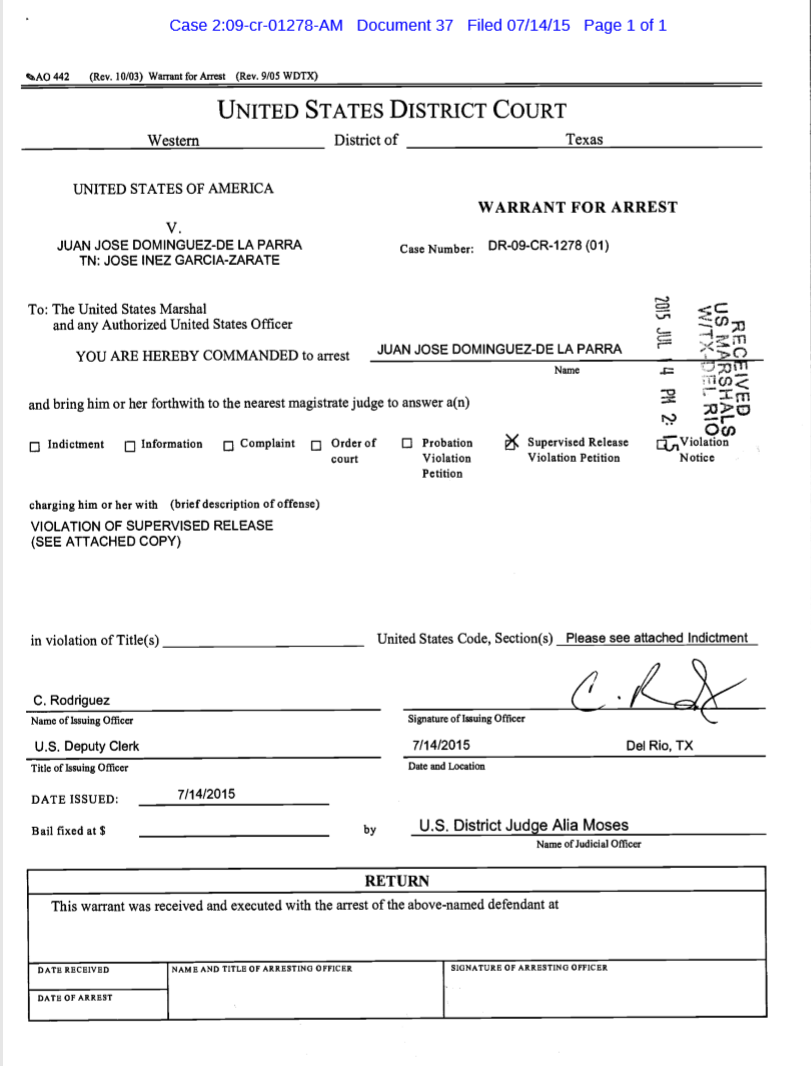
After serving his sentence, on March 26, 2015 the Federal Bureau of Prisons released Zarate to the Bureau of Immigration and Customs Enforcement (I.C.E.), which immediately transferred him to the San Francisco County Sheriff’s Department based on an outstanding drug charge. The next day, the state dismissed the pending criminal charges against Zarate, but because San Francisco is a “sanctuary city,” rather than return Zarate to I.C.E.’s custody to be deported, the sheriff’s department released Zarate.

Three months later, on July 1, 2015, Zarate shot and killed Steinle while she walked with her father on a San Francisco pier. Zarate’s attorney claimed Zarate did not intentionally shoot Steinle, but that the gun accidently discharged after he picked it up from under a bench where he supposedly found it.
Given its not-guilty verdict on the three counts related to shooting Steinle, the jury apparently believed Zarate’s version of events. The jury did, however, convict Zarate on one count of being a felon in possession of a firearm—an offense with a maximum penalty of three years in prison, although Zarate received credit for the two years he spent in jail awaiting trial on the murder charge.
Zarate has not yet been sentenced, but CNN reports that “[t]he Department of Justice said a federal detainer requires Garcia Zarate to be remanded to custody of US Marshals Service to be transported to Texas.” By revoking Zarate’s supervised release, the DOJ will wrestle custody of him from both the sanctuary-city officials and the jurisdiction of the liberal, mischief-making Ninth Circuit Court of Appeals.
Zarate Needn’t Get Off Free, Though
However, the government’s revocation petition notes the maximum penalty for Zarate’s violation of the terms of his supervised release is only two years imprisonment. Thus, while a promising first step, the Department of Justice should not stop there.
As I suggested on Twitter immediately following the verdict, the federal government should charge Zarate with violating federal gun laws, which prohibit felons and illegal immigrants from possessing firearms. A little later, but to a much larger audience, former assistant U.S. attorney Andrew McCarthy tweeted similar sentiments. 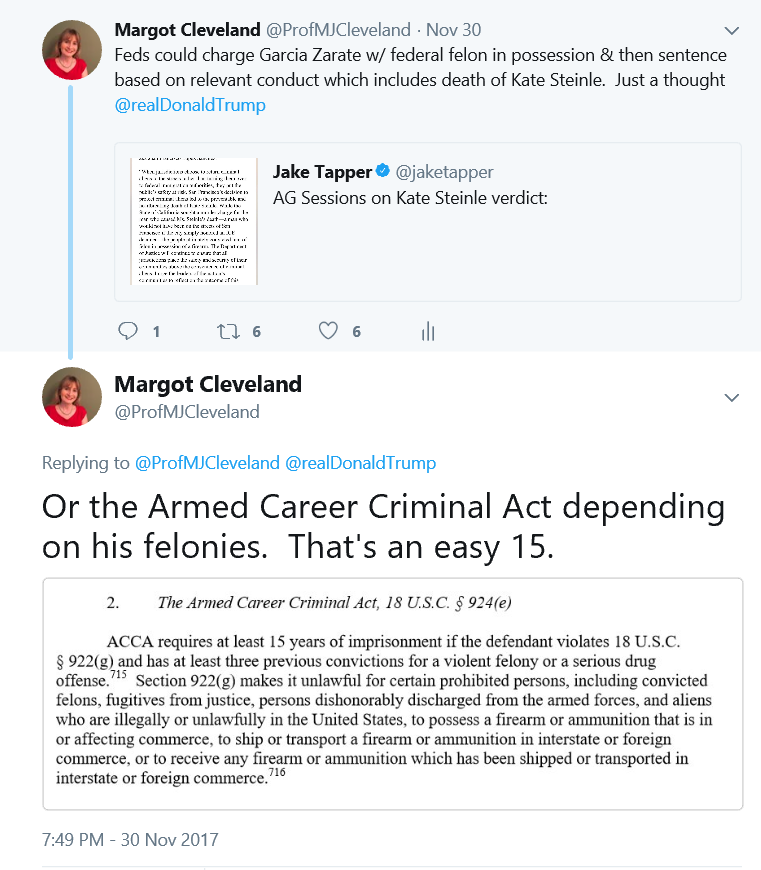
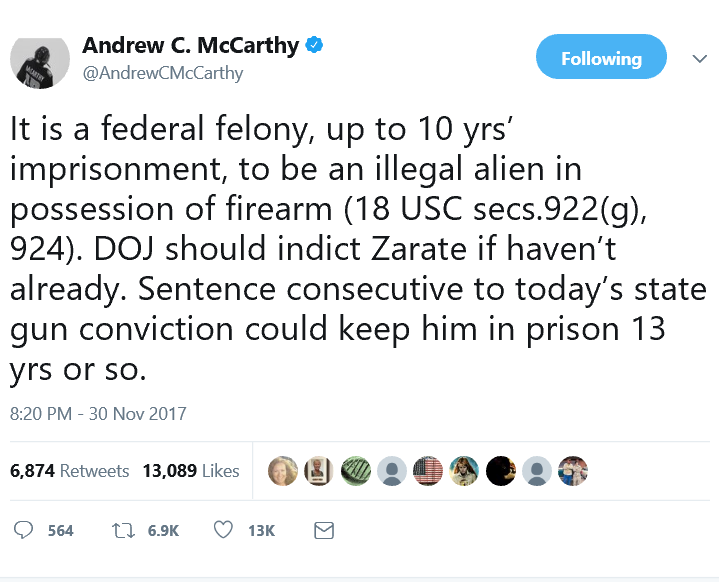
And fear not: Double jeopardy is not a bar to prosecuting Zarate a second time for illegally posessing a firearm, because the federal government is a separate sovereign from the state of California. Also, while the federal government typically does not prosecute a defendant based on “substantially the same actions,” according to the DOJ’s “Dual and Successive Prosecution Policy,” federal prosecution is appropriate in situations such as Zarate’s, where there is a “substantial federal interest” “demonstrably unvindicated” by the state prosecution.
While the DOJ has yet to publicly comment on prosecuting Zarate for federal firearm offenses, a DOJ official told me they are seriously considering bring federal charges against Zarate and CNN likewise reported a government official stated “[a]ll available federal options are on the table.”
How Zarate Could Spend 15 More Years in Prison
A federal firearms conviction would carry a sentence of up to 10 years in prison—possibly 15 depending on the number and types of prior felonies Zarate has—on top of the two years he will serve once his supervised release is revoked. Of course, there is no guarantee Zarate will receive the maximum sentence, but it seems likely given his extensive criminal history, and the factors federal courts consider in sentencing defendants, including “relevant conduct,” the “particular characteristics” of the defendant, and the importance of general deterrence.
As “relevant conduct,” Steinle’s death would weigh heavily in the balance, as would Zarate’s multiple illegal reentries into this country following deportation, and the need to deter other aliens from illegally re-entering the United States after being deported.
While nothing can assuage the pain Kate’s family suffers, a more substantial sentence provides a small semblance of justice for the Steinles. Yet that is not nearly enough, either to exact retribution on Kate’s killer or to assure the public of its safety. To many, the answer is ending sanctuary city polices.
But let’s be honest. While San Francisco’s sanctuary city policies prevented the federal government from deporting Zarate in March 2015, even had Zarate been deported at the time, he likely would have already found his way back to the United States from Mexico. According to news reports, the feds had already deported Zarate five times. Court records show the ease with which Zarate returned: Following a March 6, 2003 deportation, Zarate was arrested on July 4, 2003, in New Mexico.
The truth is sanctuary cities are but an unfired brick in an unbuilt wall: Our porous, unprotected border and the federal government’s coddling of deported aliens hold equal blame.
Zarate Isn’t the Only Criminal Alien We Won’t Prosecute
Zarate is far from alone in illegally returning to the United States (multiple times!) following deportation. According to a 2015 report from the U.S. Sentencing Commission on Illegal Reentry, of “all federal cases in which offenders are sentenced under the United States Sentencing Guidelines,” illegal reentry cases are a “significant portion,” of the cases—representing 26 percent of the total.
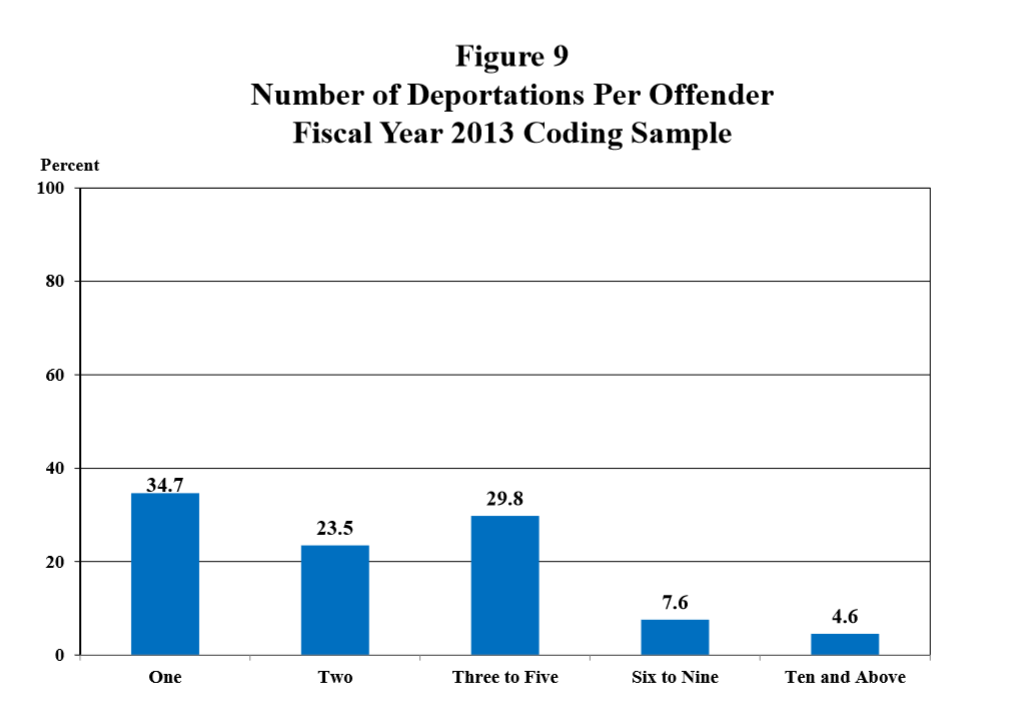
Other striking statistics? “[T]he average illegal reentry offender was deported 3.2 times before his instant illegal reentry prosecution, and over one-third (38.1%) were previously deported after a prior illegal entry or illegal reentry conviction.” Additionally, “61.9 percent of offenders were convicted of at least one criminal offense after illegally reentering the United States.” And only “4.7 percent of illegal reentry offenders had no prior convictions and not more than one prior deportation before their instant illegal reentry prosecutions.”
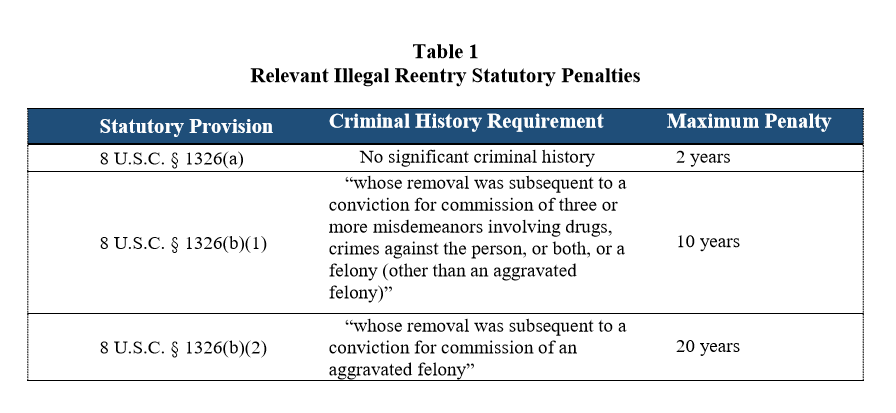
Yet, even with the huge number of reoffenders, judges continue to give a slap on the wrist, a pat on the back, and a push of the revolving door. Even though Congress provided for sentences of up to 20 years for illegal reentry, the average sentence hovers around 20 months instead.
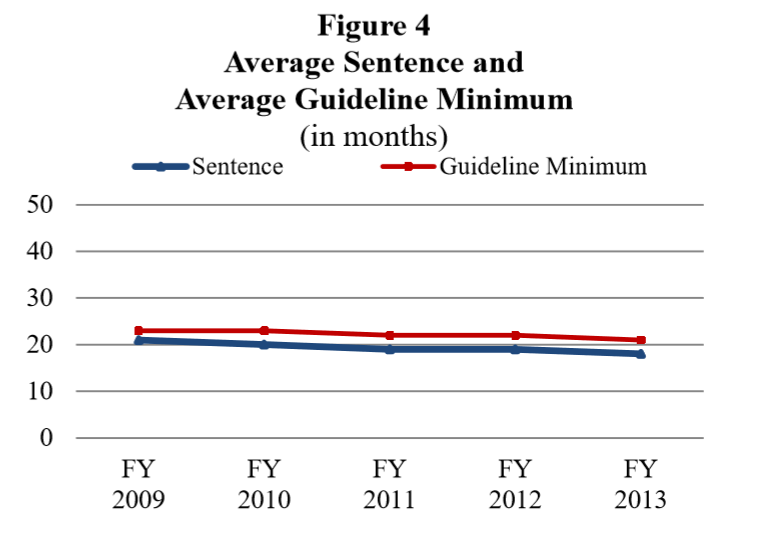
Absent a secure border to prevent reentry, the punishment meted out to repeat offenders must persuade the Zarates of the world that it is not worth the risk to return. The only available deterrent—long prison sentences—comes at a steep cost. Yet in debating security measures, Congress focuses solely on the cost of safeguarding the border. They ignore the cost of continuing to arrest, prosecute, incarcerate, and deport the same individuals over and over again. And as Kate’s family could attest, some costs you just can’t put a price on.









